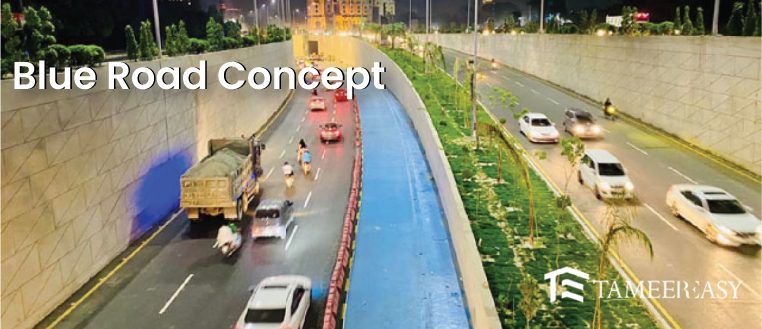Introduction
The construction sector has increasingly emphasised environmentally friendly procedures and tools in recent years. Blue Road Technology is one such cutting-edge strategy that is becoming more well-known. This innovative idea blends sustainable energy, smart infrastructure, and transportation concepts.
By integrating various components, It strives to convert conventional roads into effective and environmentally friendly transportation corridors. This post will examine what Blue Road Technology includes, consider implementation options, and discuss its many advantages.
What is Blue Road
Blue Road Technology, called “Smart Road” or “Smart Highway,” integrates cutting-edge technology and eco-friendly components into traditional road infrastructure. It uses advanced technologies to improve security, effectiveness, and environmental sustainability.
Smart lighting, renewable energy production, intelligent traffic management systems, and infrastructure for charging electric vehicles are some of the main elements of this technology.
Use of the Blue Road Technology
1). Smart Lighting
Blue Road Technology uses intelligent lighting systems that modify illumination levels in response to traffic volume and environmental factors using sensors and sophisticated controls. These green LED lights save electricity use and guarantee the best visibility for cars, improving traffic safety.
2). Renewable Energy Generation
Incorporating renewable energy sources into the road infrastructure is one of the fundamental components of Blue Road. Solar panels are placed on the surface of roads or in special buildings to capture solar energy and convert it into electricity. This clean and sustainable power can satisfy the energy requirements of streetlights, charging stations, and other infrastructure components.
3). Intelligent Traffic Management Systems
Blue Road Technology uses these systems to improve traffic flow and lessen congestion. These systems evaluate traffic patterns and dynamically modify signal timings using real-time data from sensors, cameras, and connected automobiles. By optimising traffic management, It reduces travel time, fuel consumption, and carbon emissions.
4). Empowering Electric Mobility
Blue Road Technology includes electric car charging facilities along the road network in response to the rising popularity of electric vehicles (EVs). These charging stations allow EV owners to have easy power access, promoting eco-friendly transportation options. It helps to significantly reduce greenhouse gas emissions and air pollution by encouraging the usage of electric vehicles.

Blue Road Technology Advantages
1). Environmental Sustainability
Blue Road Technology considerably reduces the environmental impact of transportation infrastructure. Reliance on fossil fuels is reduced, and carbon emissions are minimised by integrating renewable energy sources and energy-efficient technologies. This environmentally friendly strategy aids in the fight against global warming and advances a cleaner future.
2). Enhanced Safety
Blue Roads are safer because of intelligent lighting and traffic control technologies. Roads that are well-lit increase visibility, which lowers the chance of accidents. Real-time data analysis also enables proactive actions to address traffic, reduce accidents, and enhance emergency response times.
3). Effective Resource Use
Blue Road makes the best use of resources. By producing clean energy, solar panels lessen dependency on conventional power sources. The use of fuel and traffic congestion is reduced due to intelligent traffic management systems, which increase the effectiveness of road networks.
4). Infrastructure Built for the Future
This Technology lays the groundwork for future development by incorporating smart technology. The infrastructure’s versatility and flexibility make it possible to include cutting-edge innovations like linked and driverless vehicles, improving road efficiency and safety.
5). Economic Advantages
Blue Road Technology implementation has potential economic benefits. The decreased energy use generates cost savings in terms of operation and maintenance. In addition, EV charging infrastructure encourages EV use, promoting the expansion of the green transportation industry.
Conclusion
In conclusion, Blue Road Technology presents a groundbreaking solution for sustainable transportation infrastructure. Integrating renewable energy, intelligent systems, and electric vehicle charging facilities fosters eco-friendly mobility and reduces greenhouse gas emissions.
With enhanced safety, effective resource utilisation, and a future-ready framework, It paves the way towards a cleaner and more efficient transportation future. Embracing this innovative approach can lead to a greener, safer, and more economically advantageous road network.


